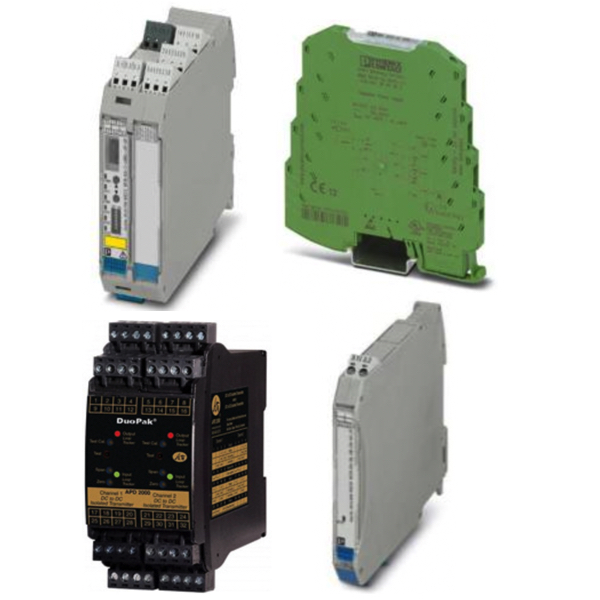Signal & Power Conditioning

Signal conditioning is the process of manipulating and preparing an input signal to enhance its quality, accuracy, or compatibility with the next stage of processing or measurement. It involves various techniques and devices to ensure that the signal is in the appropriate form for further analysis, data acquisition, or control.
Signal conditioners are electronic devices designed to perform signal conditioning tasks. They can be standalone units or integrated into larger systems such as a data acquisition system or control devices. Signal conditioners are commonly used in industrial measurement environments, scientific research, and other applications where accurate and reliable signal processing is required.
The input signal to a signal conditioner can come from various sources, such as sensors, transducers, or other measuring devices. The input signal may be in the form of an electrical signal (voltage or current) or other physical measurements, such as temperature, pressure, or strain.
More Information about Signal Conditioning
The primary functions of signal conditioning include:
Amplification
Signal conditioners often include amplification circuits to increase the strength or amplitude of the input signal. Amplification is necessary to improve the signal-to-noise ratio and ensure that the signal is within the measurable range of the subsequent processing or measurement system.
Filtering
Signal conditioners may incorporate filters to remove unwanted frequencies or noise from the input signal. Filters can be analog or digital and are used to improve the signal quality by reducing electrical interference or eliminating frequency components outside the desired range.
Excitation
Some sensors, such as strain gauges or resistance temperature detectors, require an external voltage or current, known as excitation, to function properly. Signal conditioners can provide the necessary excitation signal to power these sensors.
Isolation
In certain applications, electrical isolation is required to protect the measuring device or the subsequent processing equipment from electrical interference or potential ground loops. Signal conditioners can provide electrical isolation between the input and output signals, ensuring accurate measurements and preventing interference.
Conversion
Signal conditioners may include analog-to-digital converters (ADCs) to convert analog signals into digital format for compatibility with digital systems or data acquisition devices. This conversion allows for further processing, storage, or analysis of the signal.
Signal conditioning plays a crucial role in ensuring accurate and reliable measurements or data acquisition. By conditioning the input signal, signal conditioners help reduce noise, improve the signal quality, and make the signal suitable for the specific requirements of the measurement or control system. They enable accurate data collection, reduce measurement errors, and enhance the overall performance and reliability of the system.
FAQs
How does signal conditioning affect an output signal?
The specific effects of signal conditioning on the output signal depend on the nature of the input signal, the desired outcome, and the techniques applied during the conditioning process. Signal conditioning aims to improve the quality, accuracy, and compatibility of the output signal for better analysis, interpretation, and utilization in downstream systems or applications.
How does signal conditioning work with a sensor signal from a temperature sensor?
Temperature sensors' signals can be optimized for accuracy, linearity, and compatibility with a measurement system. The conditioned signal is then suitable for further processing, analysis, and interpretation of temperature measurements.
What is cold junction compensation?
By applying cold junction compensation, the temperature measurement system compensates for the influence of the reference junction temperature, allowing for more accurate and reliable temperature measurements with thermocouples. It ensures that the temperature reading reflects the actual temperature at the measuring junction rather than the temperature at the reference junction.
Signal Isolation Basics
When dealing with scenarios that involve many different control circuits and input and output signals, distortion can occur. This distortion can corrupt the signals, rendering the data virtually useless. For example, if there is a transmitter sending a 4-20 milliamp signal to a PLC and the transmitter is located several feet away in a different building, both devices have the possibility of having different ground potentials. This difference in potential can cause the current flowing between the two points to distort the control signal being sent. This current flow between two different ground potentials is referred to as a ground loop. Ground loops can be fairly common in industrial control applications, and because of the issues that they cause, must be controlled. This is where signal isolation comes into play.
Signal isolation
Signal isolation provides electrical isolation between input and output circuits and is sometimes referred to as galvanic isolation. This physical break in the galvanic path of the control signal offers a way to eliminate the effects of ground loops. There are two different methods of signal isolation that are used today: optical isolation and transformer isolation.
Optical isolation
Optical isolation uses a module and a small circuit board composed of an LED and photosensitive detector with an insulating air gap, that creates the physical separation. The advantage of using optical isolation is that the size of the unit is quite small and can provide higher levels of insulation than other methods. A disadvantage of using optical isolation is that these devices need to be powered separately from the signal itself and the signals need to be relatively small.
Transformer isolation
Transformer isolation utilizes a transformer to provide the isolation gap, while still allowing the signal to be transmitted. This type of isolation works well with AC power signals. An advantage of using this type of isolator is the that it does not require its own power source. It can simply transmit the signal passively.

